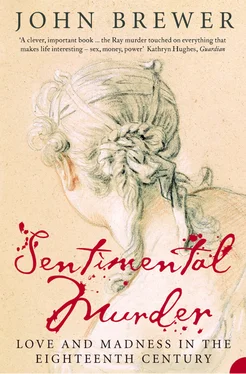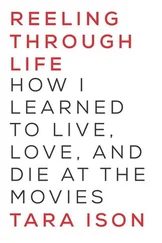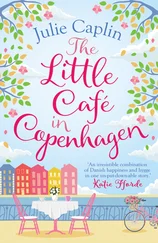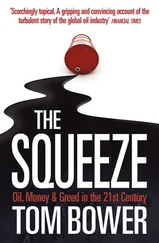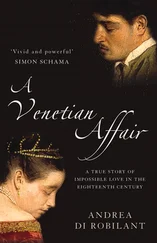Hackman’s conduct after the murder reinforced his claim that he had been tricked into believing that Ray had a new lover. Surely a man who behaved with such dignity after his crime could not have been crazed, nor could he have plotted or planned to kill his lover. (Boswell never even considered the possibility that Hackman might have set out on the night of 7 April to murder Martha Ray.) Some other, outside circumstance must have pushed him over the edge. As we have seen, Hackman told Walsingham that he blamed it all on Galli, and rumours to that effect were soon in circulation, though they did not feature much in the newspapers. Hackman did not press the point and did not mention it at his trial. He had strong reasons not to antagonize Sandwich. Blaming Galli would not have helped his defence at the trial – indeed, it would have supplied a stronger motive for premeditated murder – and any vindictiveness would not have sat well with his determination to die with dignity. But once Hackman’s body had been sent to Surgeon’s Hall his supporters and critics of Sandwich were free to attack the Earl and Martha Ray’s chaperone.
Soon after Hackman’s execution most London papers ran advertisements for a new pamphlet entitled The Case and Memoirs of James Hackman written by ‘A PARTICULAR FRIEND’ and published, it was claimed, in order to prevent other ‘spurious publications’. The Case and Memoirs was an immediate success. Within two weeks of its first appearance, the publisher was announcing its fifth edition, promising a large print run so that eager readers would not be disappointed. The tenth and 151 final edition appeared in early June.
The Case and Memoirs was certainly the most eloquent defence of James Hackman, an apology that used the sympathy that Hackman had excited during his trial and execution to place his conduct in the most favourable light. In many ways it trod familiar ground. It emphasized Hackman’s ‘manly and collected behaviour’ and how ‘his deportment was noble, and gained him the admiration of his judge and jury in the course of his trial’. It framed the entire story as one of Hackman’s heroic, eventually successful struggle to tame his passions. It was a saga about how a man was able to recover from a momentary act of madness.
But the publication of The Case and Memoirs also marked the breakdown of the consensual view of the murder that had been shaped and shared by the friends of Hackman and Sandwich. The author of The Case and Memoirs , confronted by public scepticism of his interpretation of events, grew progressively more outspoken and altered the fourth edition in early May to make his picture of Hackman even more sympathetic. Eventually, in the seventh edition, he placed the blame for her death squarely on the shoulders of Martha Ray. He even tried to blackmail Caterina Galli into implicating the Earl of Sandwich, offering to absolve her from blame in the affair, if she would pin the blame on Ray’s keeper.
The Case and Memoirs was published by George Kearsley, the former publisher of John Wilkes’s North Briton , one of the men who had been arrested in 1763 when the government had tried to put a stop to Wilkes’s acerbic and very popular periodical. Kearsley, threatened with prosecution by the Secretary of State’s office, had reluctantly – and much to the disgust of Wilkes – revealed all he knew about the North Briton and its author’s publishing activities. In 1764, possibly as a result of his difficulties during the Wilkes affair, he was declared bankrupt, though he was soon back in business. Embarrassed and humiliated, Kearsley was full of resentment against members of the government, including Lord Sandwich who had played a major part in his prosecution.
Kearsley was a general bookseller who had first started publishing books, pamphlets and papers in the late 1750s in Ludgate Street, moving to new premises in Fleet Street, opposite Fetter Lane, in 1773. Though he had no particular speciality, throughout the 1770s he published pamphlets and poems attacking the moral depravity of the aristocracy, as well as political tracts attacking the government and supporting the American colonists. He had close connections with John Almon, Wilkes’s publisher and friend, who had been behind the attack on Sandwich and Martha Ray for corruption in 1773, and he was connected to the group of booksellers who took a consistently critical line on the government throughout the 1770s. He had no love for the Earl of Sandwich. So he was an obvious figure for an author to approach if he were bent on publishing a defence of Hackman. But even if Kearsley had not had reasons to dislike Sandwich and Ray, he would have jumped at the chance of printing the life of such a notorious and controversial figure.
The anonymous author of The Case and Memoirs was in fact a young barrister of the Inner Temple, Manasseh Dawes, who had assisted in Hackman’s defence. Though he occasionally makes a brief appearance in the press reports of 1779, very little is known about him apart from his fame for legal erudition and what can be gleaned from his published work. His preoccupations in print are revealing. His first books – Miscellanies and Fugitive Essays both of which Kearsley published in 1776 – mixed poems and stories of the trials of love with short political essays supporting the opposition, political reform and the American colonists. His subsequent writings tackled such issues as libel, crime and punishment, the extent of the supreme power, and the nature of political representation. His position, though sometimes eccentric, followed a consistently reformist line.
If we read Dawes’s first writings – his poems and stories of romantic love – autobiographically, then it is not hard to see why he took up Hackman’s cause. His verses are full of the irrational power of love. Love is a source of woe, a wound, a form of possession that takes hold of its victim: ‘What tho’ I once resolv’d and strove/To quell and spurn the force of love,/I then could not my mind controul,/ While such fond pangs were in my soul 152 ’. In his stories Dawes was much exercised by the tension between sexual passion and proper conduct, especially among young men. He seems to have accepted that sexual desire (and its fulfilment) was natural outside wedlock, but to have worried about how illicit sexual practice, the guilt and perplexity it produced, affected relationships. His first publications are full of youthful ardor and confusion, as well as a passionate adherence to political probity and the reform of the law.
Dawes claimed to 153 know Hackman and his brother-in-law Frederick Booth well, but in the controversy that blew up about the authenticity of his pamphlet he was forced to concede in the press that he had known neither of them before the notorious case. So Dawes chose to intrude himself into the story – to offer Hackman legal advice, to explain his turbulent feelings, and to act as his public apologist. Certainly he was Hackman’s visible supporter. The St James’s Chronicle reported that ‘Mr Hackman was attended into and out of court by his friend, Mr Dawes, a Gentleman of the Bar, who has kindly attended him in his Confinement, and endeavoured to give him all the Counsel and Satisfaction in his power 154 ’. (It is worth bearing in mind, however, that Dawes probably got this item inserted into the paper.)
Dawes went to great lengths to give his pamphlet the authority of being Hackman’s version of why Ray had died. The advertisements for The Case and Memoirs claimed its swift publication was intended to pre-empt less reliable accounts that might place Hackman in an unfavourable light. And in the pamphlet’s dedication to the Earl of Sandwich Dawes makes the claim to be acting as Hackman’s spokesman clear: ‘the following pages … are authentic, because they are taken from the mouth of Mr Hackman while in confinement, and reduced to writing by a person who … knew him, and respected his very amiable and fair character 155 ’.
Читать дальше
